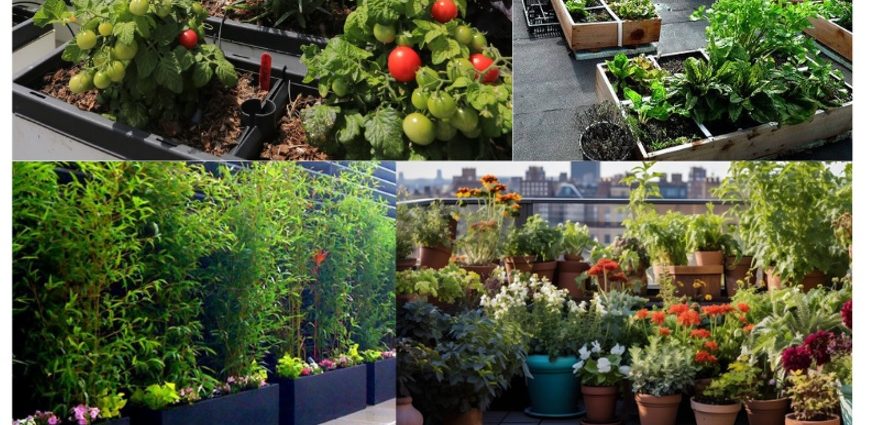Rooftop gardening involves growing plants, vegetables, or flowers on top of buildings. It’s a way to make use of empty roof space in cities. Gardens can be simple with pots or more complex with raised beds and irrigation. These spaces help clean the air, reduce heat, and insulate buildings. For people in cities, rooftop gardens offer a chance to grow food or enjoy a bit of nature.
What are the methods of rooftop gardening?
Rooftop gardening offers several methods to transform roof space into a green oasis.
Container Gardening: One popular method is container gardening, where plants grow in pots or containers. This is simple and works well for small spaces. It’s flexible because you can move the plants around as needed.
Hydroponics: In this soil-free method, plants are grown in nutrient-rich water. Hydroponics is suitable for rooftops where traditional soil might be too heavy or impractical.
Vertical Gardening: This technique uses trellises, walls, or vertical planters to grow plants upwards. It’s perfect for small rooftops and maximizes space.
Green Roof System: This involves covering the entire roof with plants. Green roofs can be extensive with shallow soil and smaller plants or intensive with deeper soil for larger plants. Proper planning is essential, including drainage and waterproofing.
Video link
What plants are best for rooftop gardens?
– Drought-tolerant sedums and succulents
– Culinary herbs such as basil, thyme, rosemary, and mint
– Tomatoes
– Peppers (bell peppers, chili peppers)
– Lettuce (various varieties like romaine, leaf lettuce)
– Strawberries
– Blueberries
– Citrus trees (dwarf varieties)
– Kale
– Swiss chard
